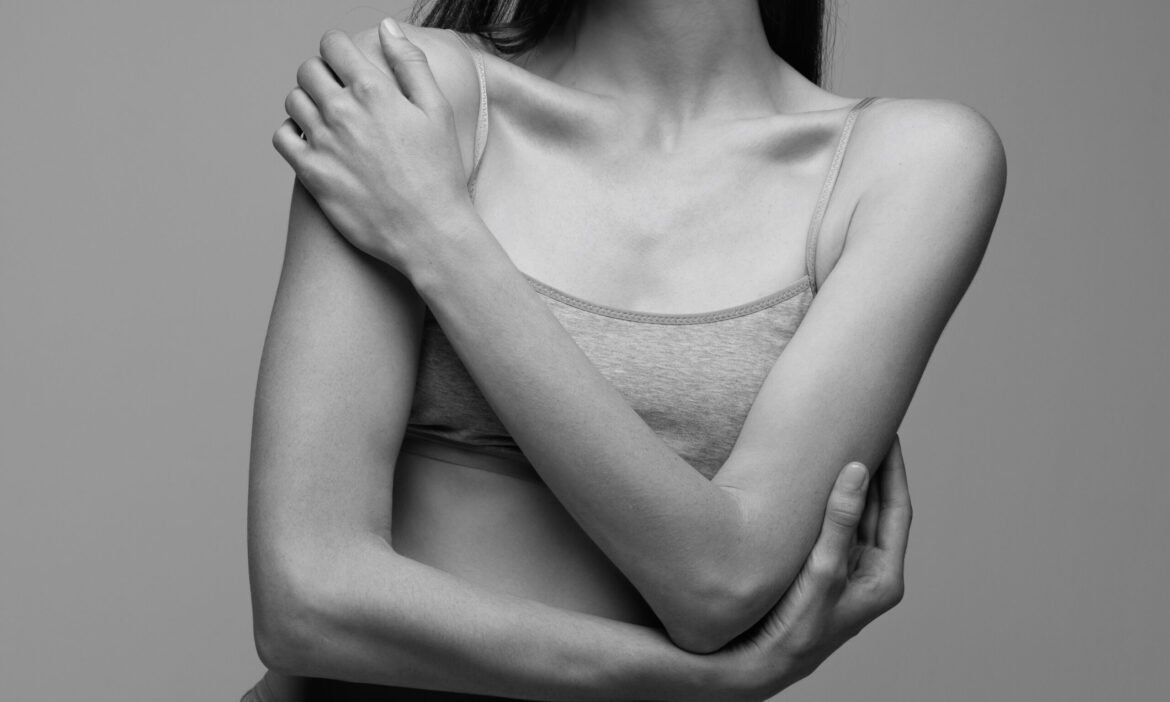Table of Contents
Sometimes living in 2025 feels a bit like a science fiction year. And when you consider how far we’ve come in surgical technology and technique, it’s not a stretch to say we are, indeed, living in the future. For women considering breast reconstruction, that means personalized, custom approaches, natural-looking implants and a growing movement towards aesthetic flat closures. And there’s still more to come.
Featured Experts
- Amy M. Sprole, MD, is a board-certified plastic surgeon in Wichita, KS
- Raman C. Mahabir, MD, is a board-certified plastic surgeon in Tucson, AZ
- Mark L. Jewell, MD, is a board-certified plastic surgeon in Eugene, OR
- David Shafer, MD, is a board-certified plastic surgeon and contracted Natrelle partner in New York
- M. Bradley Calobrace, MD, is a board-certified plastic surgeon in Louisville, KY
Breast Reconstruction Statistics
According to research published in Plastic and Reconstructive Surgery, the official medical journal of the American Society of Plastic Surgeons (ASPS), the percentage of women choosing breast reconstruction has leveled off in recent years.
“Our analysis of US national databases shows that rates of immediate breast reconstruction have stabilized over the past decade,” comments study co-author and New York plastic surgeon Jonas A. Nelson, MD, MPH. “In addition, previously documented disparities based on race and insurance also appear to have decreased—albeit slowly—with a more equitable distribution of post-mastectomy breast reconstruction.”
Between the choice to opt out of breast reconstruction altogether, limited access to breast reconstruction options or even just market saturation, there are a lot of reasons why the number of women seeking breast reconstruction is no longer increasing.
But ultimately, more research is needed to determine why exactly this leveling-off is occurring.
Implants and Tissue Transfer
“There’s implant-based reconstruction and tissue-based reconstruction, using the patient’s own soft tissue [and] using flaps from different parts of the body,” explains Wichita, KS plastic surgeon Amy M. Sprole, MD. “Using tissue may create a more natural look, but implant reconstruction is much more common.”
And when it comes to implants, patients have various options to achieve their desired look.
“Modern breast implants offer a range of choices to accommodate individual preferences and anatomical considerations,” says New York plastic surgeon and Natrelle partner, David Shafer, MD. “Natrelle®, for instance, provides both silicone and saline implants. Their silicone implants come in varying levels of gel cohesivity, often referred to as ‘gumminess,’ allowing patients to select the feel and shape that best suits their aesthetic goals. Additionally, Natrelle® offers the largest selection of smooth breast implants with five profile options—low, low plus, moderate, full and extra full—to achieve the desired outcome.”
Choosing What’s Best
What patients choose may ultimately come down to what’s best for their specific case of cancer.
“I think the best case scenario is when there is shared decision making,” explains Tucson, AZ plastic surgeon Raman Mahabir, MD. “We involve the oncologist very early on in order to best approach the unique situation, taking into account future radiation, whether or not we can spare the nipple and more.”
It also matters what treatment a patient had for their cancer and the mastectomy procedure itself.
How a mastectomy is performed can influence the outcome of a reconstruction, says Eugene, OR, plastic surgeon Mark L. Jewell, MD. “It is vital for patients to carefully pick the general surgeon for their mastectomy,” he explains. “Unless a patient and her plastic surgeon have a general surgeon who understands that tissue flaps have to be thick enough to have adequate blood supply, tissue necrosis will occur and the reconstruction will be doomed. If radiation can be avoided, there will be a far better outcome. Radiation irrevocably damages normal tissues and causes failure of the reconstruction.”
When radiation is unavoidable, Dr. Sprole says some methods can help during a reconstruction. “We’re always looking for ways to make reconstruction easier on someone who has had radiation,” she says. “Soft tissue atrophy creates an asymmetry that can be very hard to overcome without more complex soft tissue rearrangement, like the LD flap reconstruction. There can also be hard areas of scar tissue that have to be removed and replaced with soft tissues.”
‘Going Flat’
And of course, there’s “going flat,” where women choose not to have a reconstruction at all.
“A true flat aesthetic closure must smooth the extra skin, lumps and bumps, and any unevenness leftover from a mastectomy,” explains Dr. Mahabir. “It’s a very technically challenging procedure.”
In 2023, research published in Annals of Surgical Oncology conducted on over 600,000 patients found that as many as 62 percent do not seek reconstruction and prefer to go flat.
“You might be surprised how often I discuss this option with patients,” says Dr. Mahabir. “Often women tell me that they feel pressured into choosing other reconstruction options, when going flat was really their first choice.”
Dr. Mahabir’s experience lines up with survey results, with nearly one-fourth of respondents who went flat noting they received pushback from their surgeons on their decision to go flat.
The Future of Breast Reconstruction
With the advent of 3D printing technologies, it’s only a matter of time until bio-printed tissues and scaffolding become viable options for breast reconstruction. We’ve already successfully 3D printed organs, including a still-functioning bladder placed back in 1999.
Louisville, KY plastic surgeon M. Bradley Calobrace, MD, says creating 3D breast scaffolds with hydrogels and semi-synthetic meshes is a new and exciting area for further exploration. But there’s still more to learn. “There have been numerous studies demonstrating the safety of fat grafting in the breasts, but in what ways are these 3D systems similar, or are there unique concerns that should be evaluated?” he asks. “It is a very exciting development which, if found to be highly effective and safe, could be a real game changer in breast reconstruction.”


